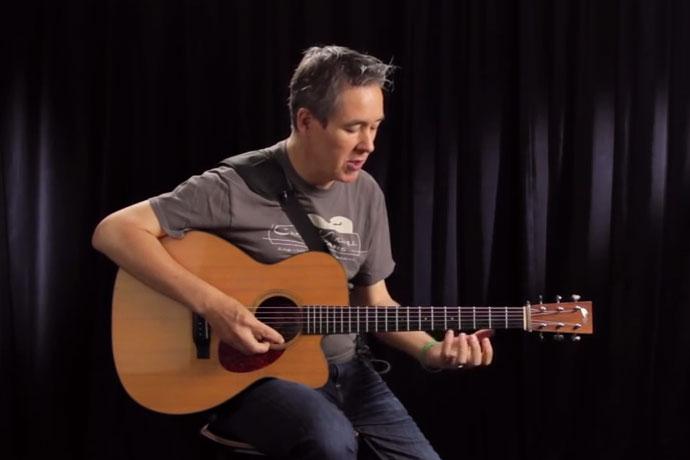Changing your string gauge
Gauge is the magic number. It's the measurement (in inches) of the outer diameter of your chosen strings, and tells you how they will feel and sound. Gauging ranges from the easy playability of super lights (.009-.042) to the thumping sustain of a heavy set (.012-.052). It's very good idea to experiment with different gauging – but it's essential that you prepare your instrument's setup before changing your gauge.
- Many players switching extreme string gauge forget that the slots on their instrument's nut have been cut to a specific width. Forcing heavy strings into slots cut for a lighter gauge will cause the string to stick and create tuning problems, or could even crack the nut. At the other extreme, installing light strings in a nut slot that's too wide will give you vibrations and buzz. If you're making a change, visit a qualified technician, who will widen the slots to suit, or replace the nut entirely.
- Bear in mind, too, that heavy-gauge strings are under more tension. As a result it takes greater physical effort to fret and bend notes, with light strings the reverse is true. As such, you will want to adjust the 'action' of your instrument (i.e. the height of the strings above the fingerboard) to suit your chosen string gauge. There are a number of ways to effect the 'action' of your instrument. If you are unsure what components to adjust, please contact a qualified repair technician.
- Whenever you change strings – brand or gauge – you'll also need to fine-tune your instrument's intonation by adjusting the position of the bridge saddles. The process depends on what model you play, but the basic principle goes like this. First, using an electronic tuner, tune your instrument to pitch. Starting with the lowest string, play a harmonic at the 12th fret. Compare the pitch on the tuner to the pitch after fretting the note. If the fretted note is flat relative to the harmonic, you'll need to shorten the string length by moving the saddle towards the pickups. If it's sharp, then do the opposite, moving the saddle back towards the strap pin.
- There's an added dimension to choosing bass strings, because you'll need to match the string length to your instrument's scale (i.e. the distance from the bridge saddles to the nut). There's quite a range of scales – from extra-long six-string basses (35"), through Fender's famous Precision and Jazz models (34"), right down to Gibson's short-scale 30" SG models. If you're in doubt over the correct length to choose, speak to your local dealer.
Have fun experimenting with your gauging and remember the potential impact the gauge change can have on the set up of your instrument. Consult a qualified repair technician with questions.


